Best Goat Breeds for Beginners
This list of the best goat breeds for beginners will help you feel confident about your new goat herd. Homesteading in midlife can be intimidating, and my goal is to help you find joy in raising goats you love to care for.
Refer to this goat breeds list anytime you want to add more amazing goats to your midlife homestead.
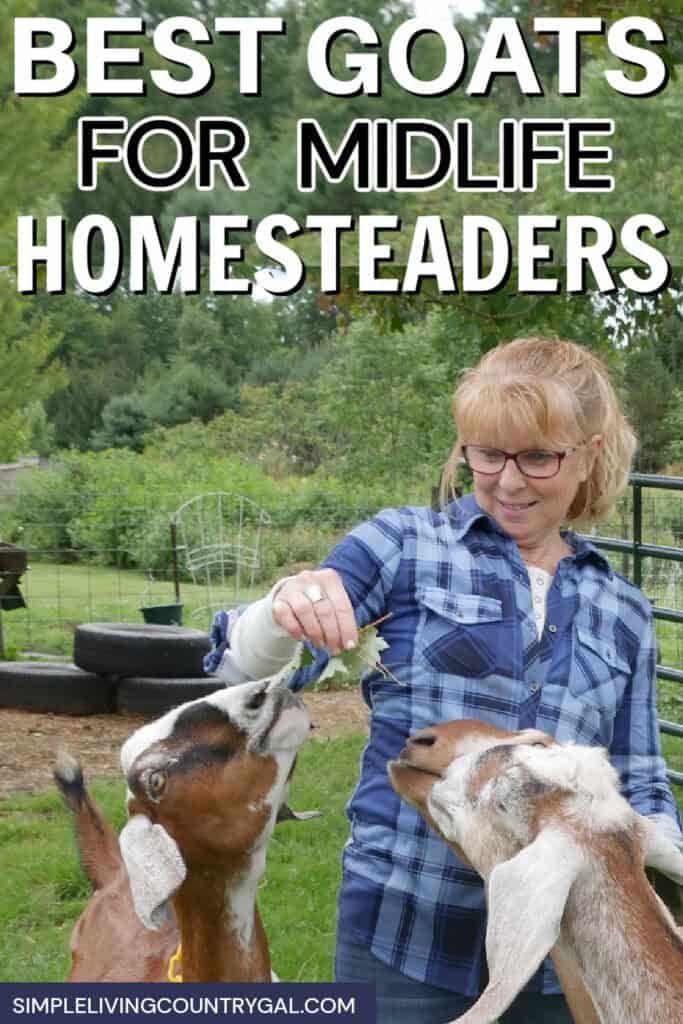
Over the years, I have raised different goat breeds on our homestead and with each I have found things I love and things I don’t. When I was younger, I just put up with annoying characteritics in the breeds but as a midlife homesteader I have found that breeds do matter.
How a goat behaves affects my ability to enjoy raising them as well as my stamina to deal with their temperament. This list is my top pick of goats that are a good fit for older women looking to add this beneficial livestock to their homestead setup.
Whether you are looking for dairy, meat, or fiber I have a few options that will work for you and your time of life.
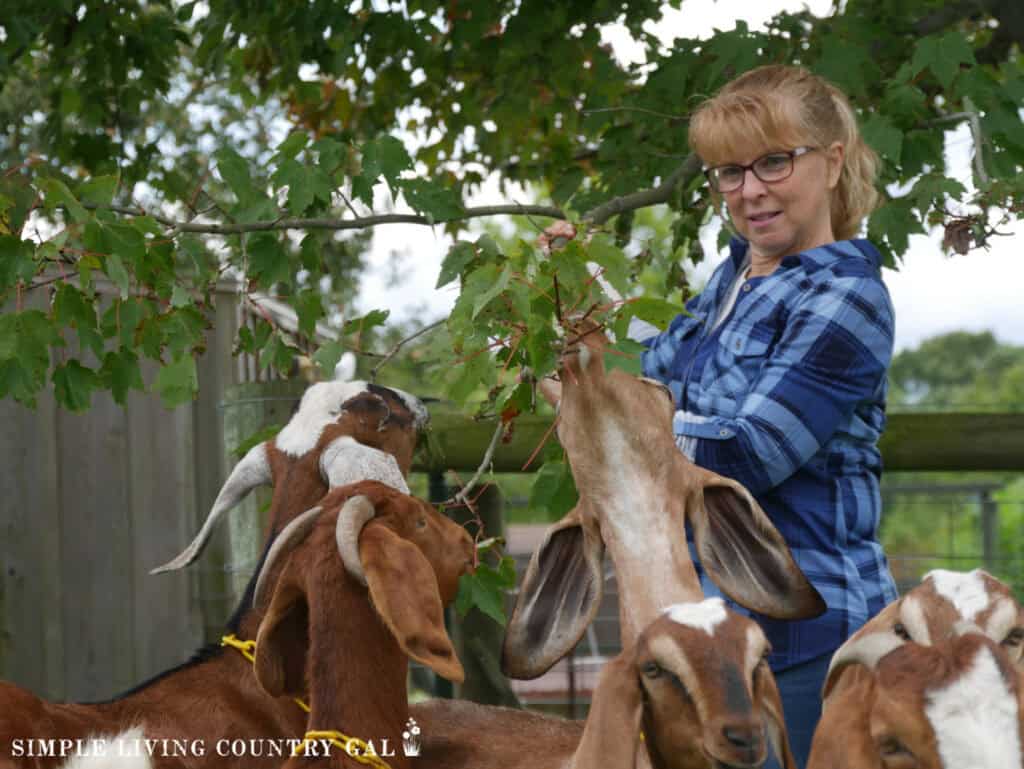
Why Choose Goats?
Keeping goats on a homestead or hobby farm has many benefits making it a great option for homesteading women of any age.
For beginners, goats are relatively easy to handle and can be trained to feed, milk, or stand when needed. Not only do they offer milk that is healthy and delicious they can also be used for meat and with some breeds soft luxurious fibers.
Goats are also quick to adapt to different areas and setups, allowing you to add goats without the need for elaborate barns or pastures.
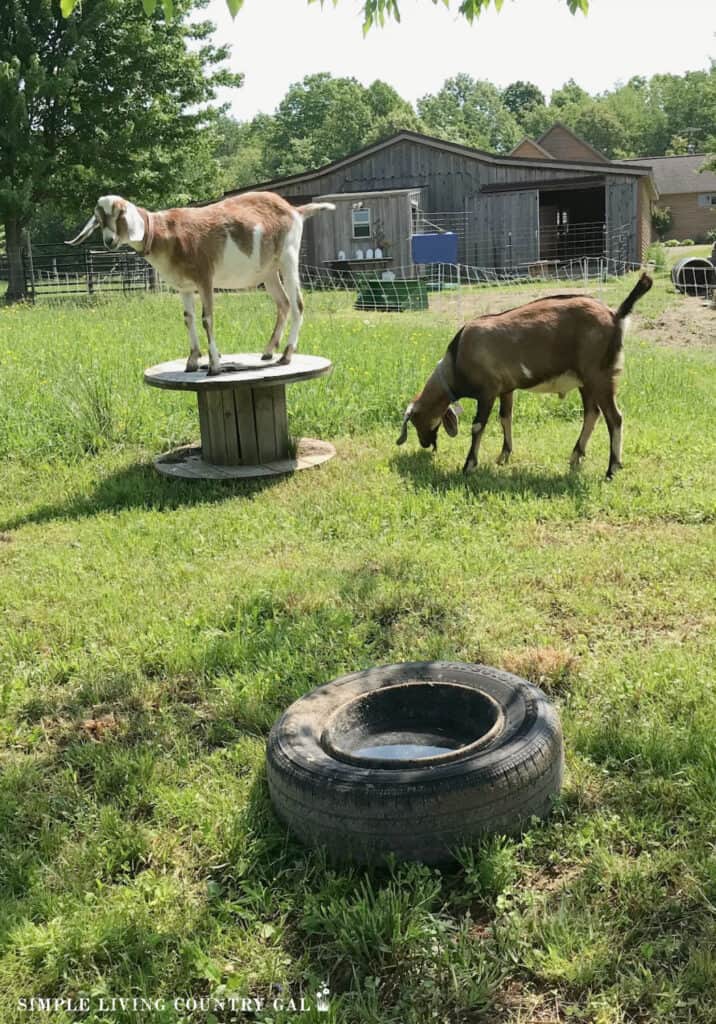
Best Goat Breeds for Beginners
Let’s face it, there are loads of goat breeds that you can raise. To help narrow things down a bit, this list is broken down into three sections: dairy goats, meat goats, and fiber goats. There are 2-3 options listed in each and a few pros and cons to sum things up.
Dairy Goats for Beginners
If milk is your top reason for raising goats, there are a few breeds that stand out and will work for a new midlife setup.
#1. Nubians
Nubians are a large breed of dairy goat that I raised for many years and I consider them a great breed for beginners. I loved their friendly disposition towards people and their ability to be trained. They are great, reliable milkers with pleasant-tasting milk that has a high butter-fat content, making it delicious and creamy. Their large teats make them easy to milk. Something to keep in mind if you suffer from hand or wrist issues.
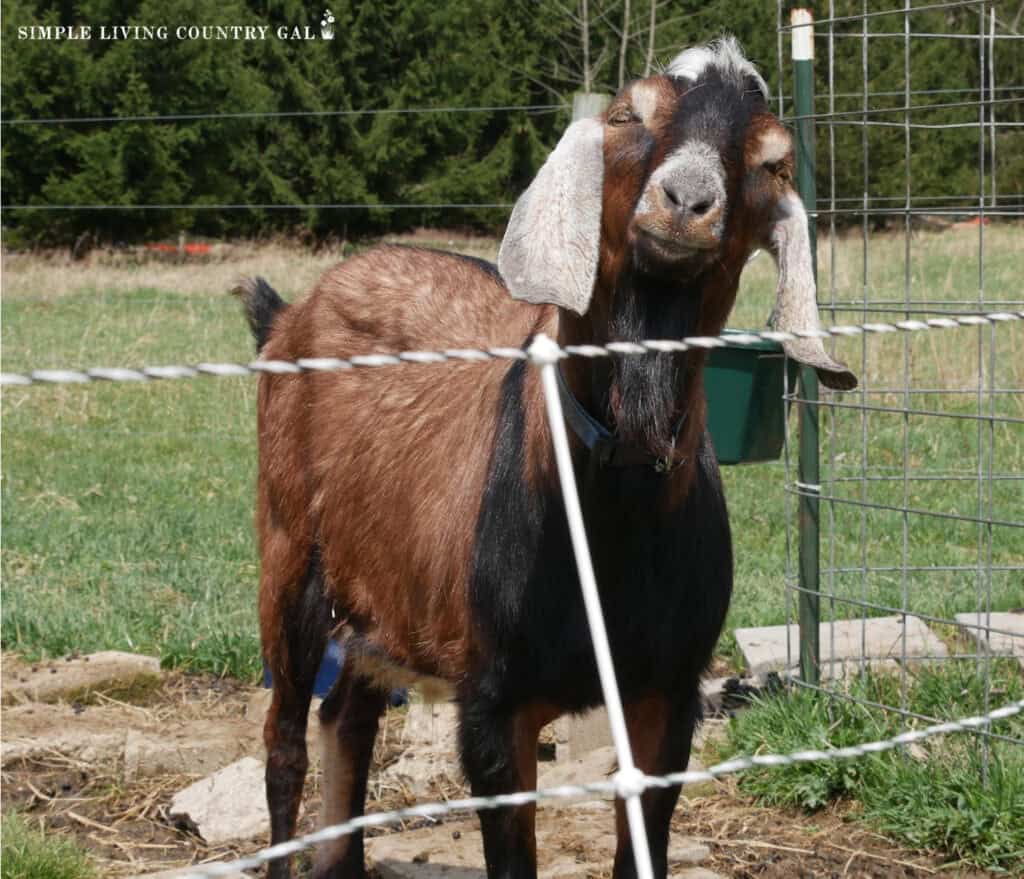
Nubians are adaptable to various climates and do very well in our frigid winters. They are easy to pick out of a herd with their long, pendulous ears.
Pros: Nubians are sweet, talkative, loves attention, good for warmer climates.
Cons: Nubians are vocal sometimes to a fault, so if you have neighbors nearby, you may want to keep this in mind.
More Goat Training Resources:
#2. Alpine
Another great choice is the Alpine goat, and I have had a few over the years. They are milk-producing machines, so if quantity is high on your list, Alpines are a good choice. They are a large breed with short airplane-like ears and also have larger teats, making them easier to milk.
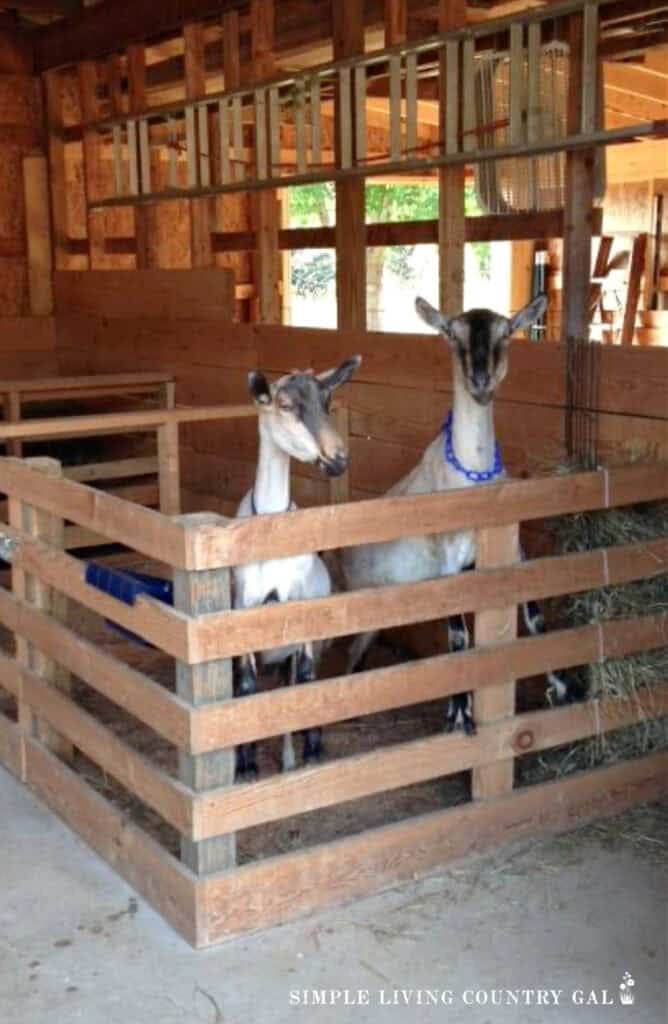
They do well in all types of weather and will train well if you work with them.
Pros: Alpines are energetic, they love to climb, and are adaptable to various conditions.
Cons: Like Nubians, Alpines are a vocal breed that will yell out to you if they see you nearby.
#3. LaMancha
If a quieter milking companion is preferred, the LaMancha goat may be your ideal choice. They are known for producing high-quality milk and have a calm character. LaMancha’s are a medium-sized breed with a distinguishable look of what seems to be missing ears.
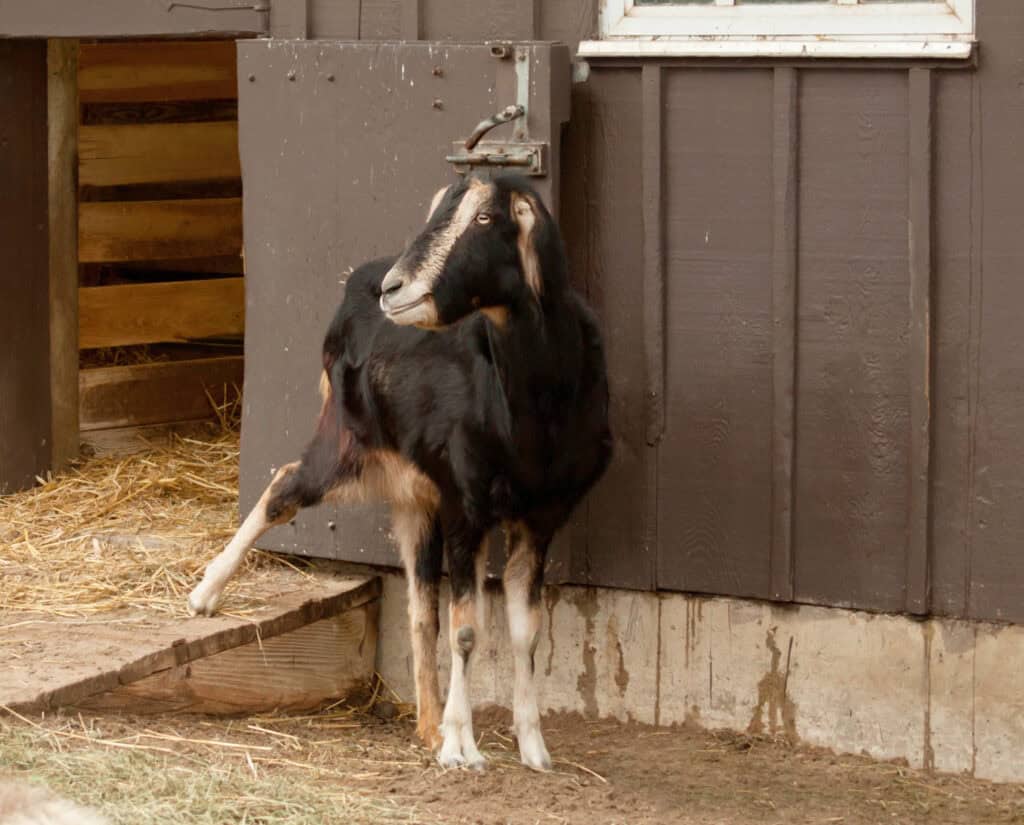
They are good milk producers and will stand calm on the milk stand without much fight.
Pros: LaManchas are gentle, great milk producers, and adaptable.
Cons: They are very curious and may look for ways to escape fenced-in areas such as a pasture.
Meat Goats for Beginners
Raising goats for meat requires specific breeds that are known to have tender and succulent cuts.
#1. Boer
Boer goats are the most common breed of meat goat and a great beginner goat breed. They grow fast and have a large stalky build. Boers are medium-sized goats and produce high-quality meat.
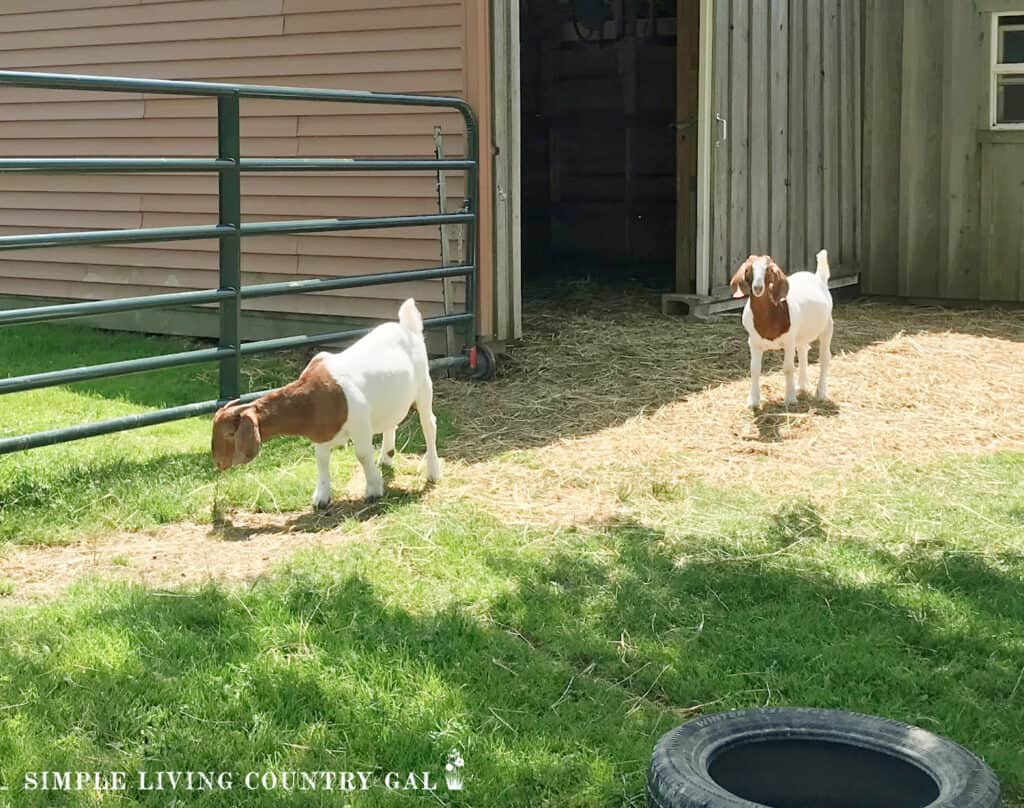
They are hardy and do well in all types of weather and setups. Boer goats are friendly and easy to train making them a great pick for a midlife homestead.
Pros: Boers are large, with fast growth, mild temperament, and a high meat yield.
Cons: Will eat more than other breeds, may be prone to worms in wet damp areas.
#2. Kiko
Kiko goats are another great meat option. They are a medium sized goat that is hardy with the ability to raise themselves making them a good self-sufficient option.
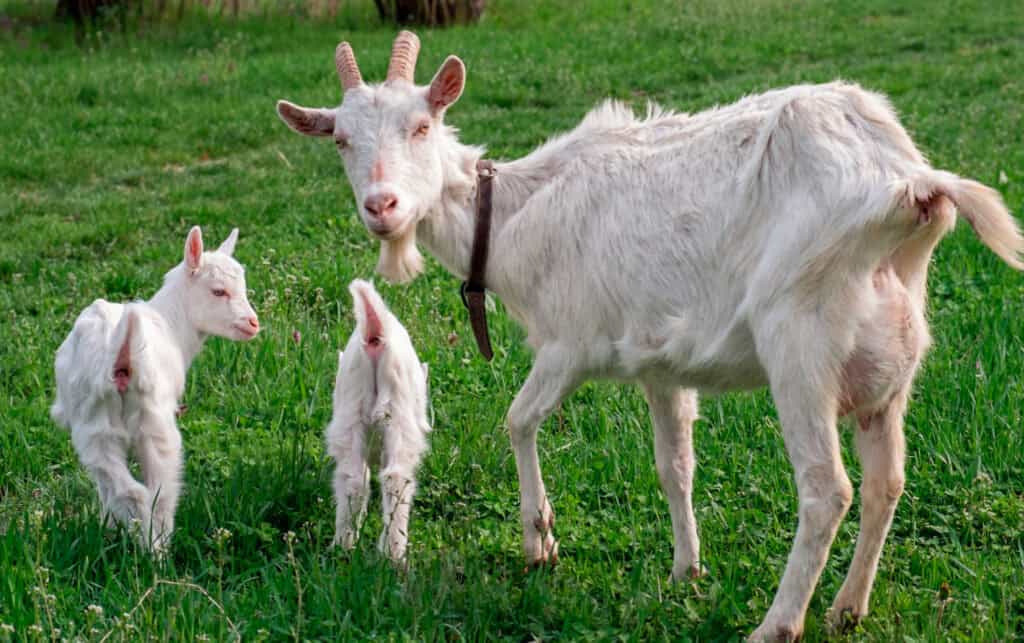
Kikos also have a natural resistance to parasites which is really helpful if you live in a wet area as we do.
Pros: Kikos are hardy, adaptable, and have high maternal instincts.
Cons: They aren’t as meaty as Boers, so they may not sell as well.
Fiber Goats for Beginners
Quickly growing in popularity is raising goats for their fiber. There are a few breeds that will work great for a beginner homestead.
#1. Angora
Angora goats are known for their lustrous mohair, which is great for spinning, knitting, and weaving. The mohair can also be dyed, making it a great resource for any crafter to own.
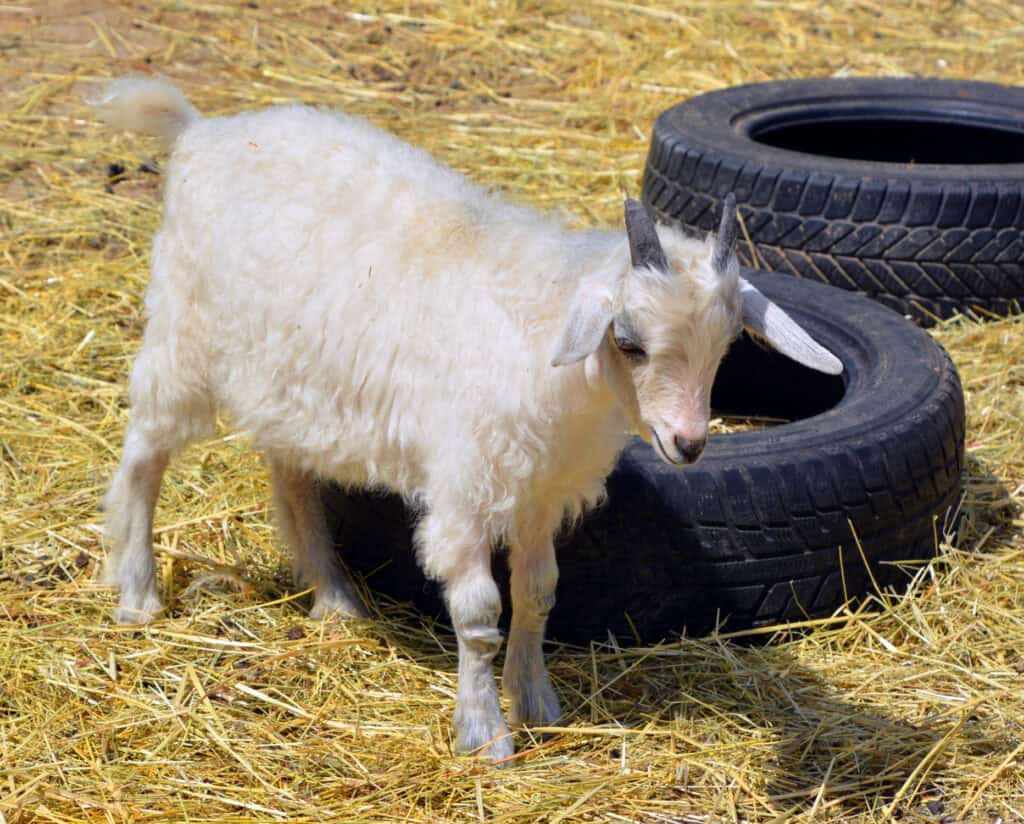
Angoras are medium-sized goats that do well in colder climates mainly because of their thick fleece.
Pros: Angora goats are curious, playful, and resilient in cold weather. They will not look for ways to bust through a pasture fence.
Cons: Bucks can be hard to manage especially during rut.
#2. Cashmere
On the softer side, the Cashmere goat offers a downy undercoat used to produce the luxurious Cashmere wool. Cashmere goats are medium-sized and do well in all types of weather.
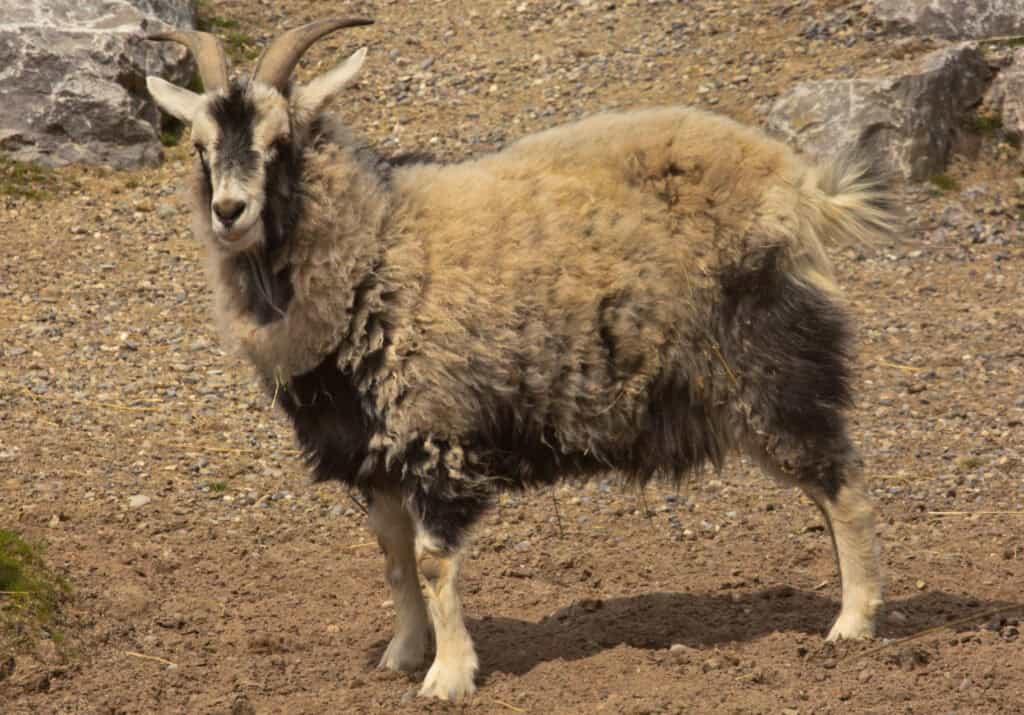
Pros: Cashmere goats are calm, adaptable, and provide fine, soft fiber.
Cons: May not like to be handled as much as other goats.
Crossbreeds for Homesteaders
Crossbreeds will give you a mix of resources making them a great option for any homestead.
#1. Pygora
Pygoras are a cross between a pigmy and an angora goat. They are a smaller breed making them a good option for a new or midlife homesteader.
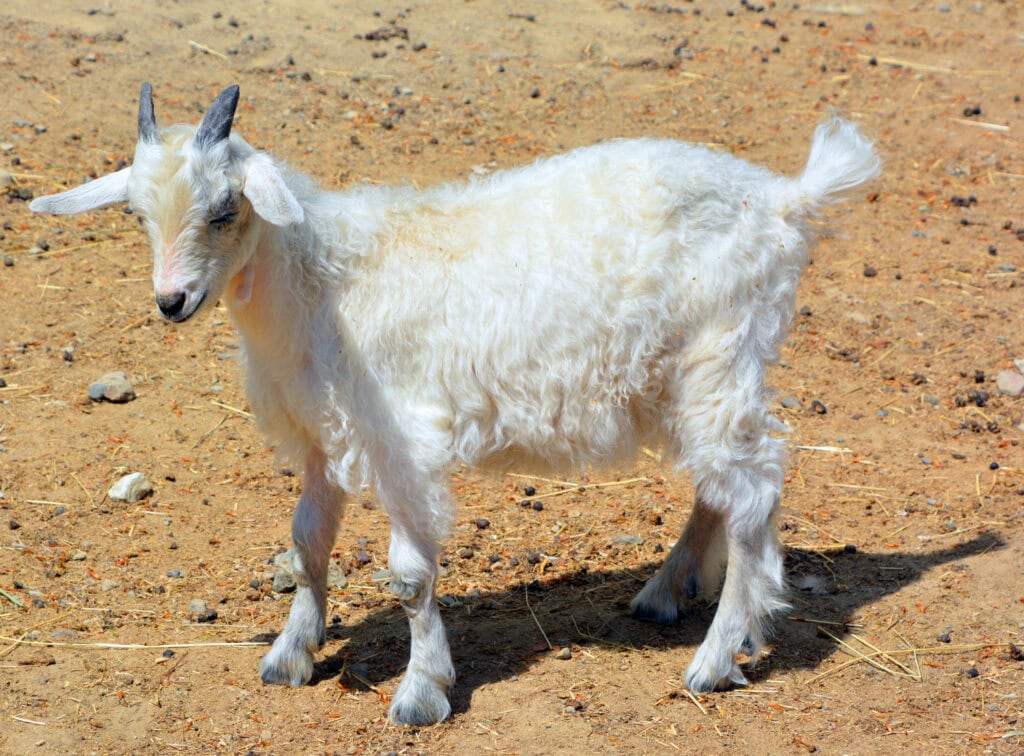
Pros: Pygoras are intelligent, inquisitive goats that are great for milk and fiber.
Cons: They are small so there will be less fiber.
#2. Nubian/Boer Cross
We raised Nubian/Boer crosses, which were quite popular in our area. This cross breed gave you good traits for milking as well as traits for good meat. The Amish loved our cross-breed goats, making them easy to sell for a nice income.
Pros: Nubian Crosses are good milk producers that can also be use for meat.
Cons: They are still a loud goat but not as loud as a full Nubian.
Crosses can be a great starting point for exploring different aspects of goat keeping.
Choosing the Right Goat for Your Needs
When deciding on a breed, you will want to consider your overall homesteading goals. If milk is your top goal then you will want to opt for a diary breed. If meat or fiber is your main reason for raising goats then one of the other breeds listed above will be a better fit.
If you are not yet sure what goats you want for your goat herd, you can start with a cross and try a few breeds.
Raising goats is a fun and rewarding addition that will work on any homestead. Refer to this list of the best goat breeds for beginners when deciding on the best fit for you.
Grow your midlife homestead by adding livestock that can generate an income you can use to support your family. With so many options like milk, soap, meat and fiber you will have many things you can offer to your local community or online.
More Goat Care Guides:
Find this article over at the Homestead blog Hop!
